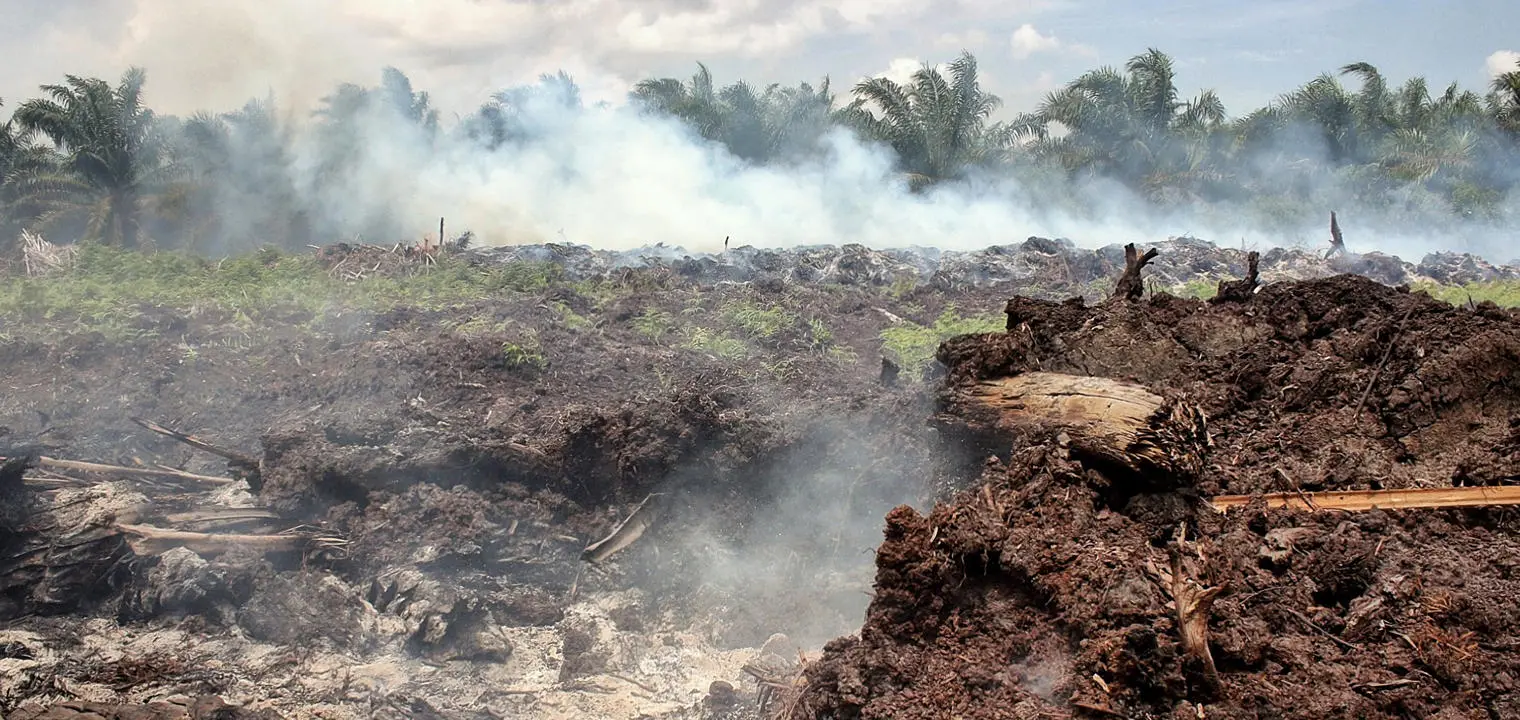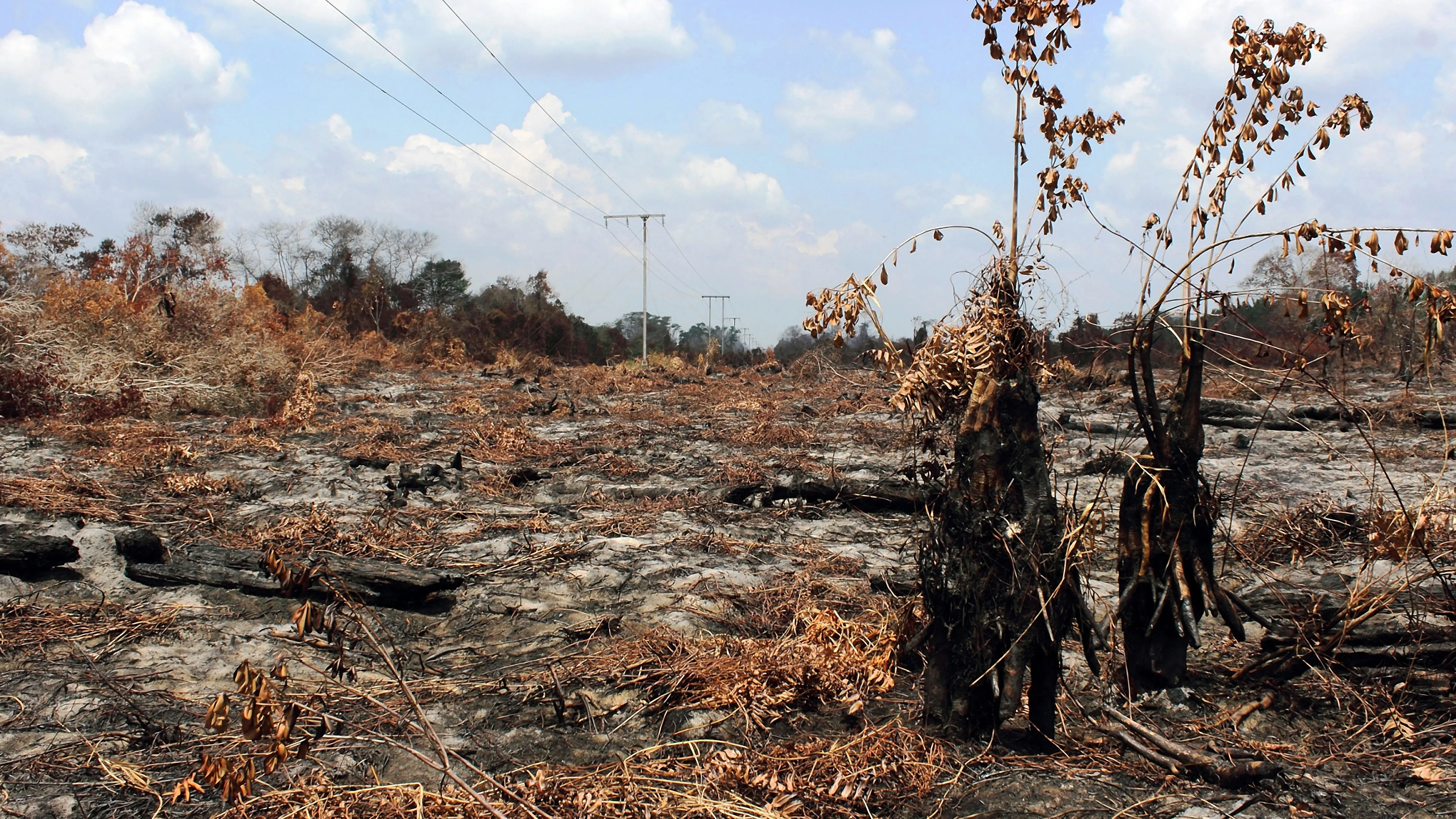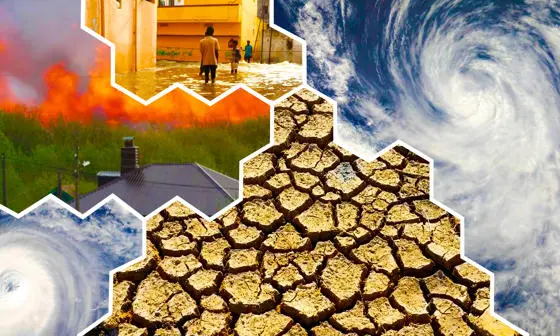The hazy shade of palm oil

Contents
Take a stroll through an oil palm plantation just south of Kuala Lumpur International Airport and you’d be forgiven for missing the signs that the land was a luscious tropical forest just a few decades ago. Look closely though, and you might notice the charred and weathered remains of grand tropical tree trunks between the palms, like driftwood washed up on a beach.
Take an even closer look, this time at the soil, and you’ll see the partially decomposed remains of the leaves and woody material of a forest – peat – this was once a boggy swamp. And yet the ground is firm and dry; an indicator of the dramatic transformation of the land by deforestation, drainage, and fire.
Once on fire, the peat may smoulder for months, emitting vast quantities of greenhouse gases and producing a thick blanket of smoke.

The invisible/hidden impact of deforestation
When tropical forests are cleared for oil palm plantations, the loss of habitat for charismatic species such as the orangutan or Sumatran tiger is often the focus of media attention. And yet, there are significant and important regional and global impacts on the atmosphere in the form of air pollution and greenhouse gases.
Following deforestation, land will often be cleared using fire. This contributes a massive pulse of carbon dioxide into the atmosphere and the loss of an important carbon sink. In the tropical peatswamp forests of Southeast Asia, these fires lead to an even more problematic issue – the ignition of carbon-rich peat soils. Once on fire, the peat may smoulder for weeks or months, emitting vast quantities of greenhouse gases and producing a thick blanket of smoke that chokes densely populated regions of Indonesia, Malaysia, and Singapore.
Until recently, very little was known about the composition of tropical peat smoke. Air quality forecasts for Singapore were often highly inaccurate and national greenhouse gas emissions accounting mechanisms relied on inadequate data. Filling this gap in knowledge was the focus of our first fieldwork campaign in Malaysia during 2015 and 2016, funded by the Royal Geographical Society.
This has involved some of the most gruelling fieldwork in one of the most hostile environments on the planet.
An active investigation
The fieldwork involved "fire chasing" – identifying peat fires from satellite imagery and then driving to the fires in an attempt to measure the smoke. We found a number of peat fires associated with deforestation in the Malaysian State of Pahang, as well as peat fires burning on oil palm plantations in North Selangor, just a two-hour drive from the capital, Kuala Lumpur. Not only were we the first to measure tropical peat smoke in situ, but our results revealed new insights into how different properties of the peat soil could affect the fire emissions. Our findings were published in two papers in 2018 (Smith et al, Roulston et al) and have now been incorporated into the Global Fire Emissions Database, widely used for improving air quality forecasts and carbon accounting.
Unfortunately, the greenhouse gas emissions from converting peat swamps to oil palm plantations do not cease when the fires are extinguished. Once cleared, the land is drained. What was once a spongy mass of peat - peat is 90 per cent water under natural waterlogged conditions – becomes a compacted dry soil. The carbon-rich organic matter that was once shielded from oxygen by stagnant waterlogged conditions is now exposed to oxygen and rapidly decomposes, releasing carbon dioxide in the process.

The lasting impact of fires and land conversion
Our most recent fieldwork, also funded by the Royal Geographical Society, has focused on this issue. What is the longer-term impact of fires and land conversion on greenhouse gas emissions? To do this we have had to establish greenhouse gas monitoring sites inside pristine forests (control sites), as well as on burnt land nearby. This has involved some of the most gruelling fieldwork in one of the most hostile environments on the planet. In collaboration with researchers from Singapore and Brunei, and after three years of fieldwork in Brunei and Malaysia, we found some surprising results. Not only are levels of carbon dioxide elevated following a fire, but we also found more methane being released, another potent greenhouse gas. We are continuing investigations into this effect, looking at how post-fire microbial and vegetation communities contribute to this effect.
The continued loss of millennia-old carbon through fires and decomposition frequently contributes more greenhouse gases to the atmosphere in a year than annual fossil fuel emissions from Malaysia, Indonesia, and Singapore combined. Halting the unsustainable conversion of tropical peatswamp forests into plantations, and reversing some of the effects of drainage on land that has already been converted presents a massive opportunity to mitigate greenhouse gas emissions, as well as averting the air pollution episodes.
Working with stakeholders, such as the Roundtable for Sustainable Palm Oil (RSPO) and the North Selangor State Forestry Department, we have been able to incorporate some of the scientific findings into RSPO best management practice guidance, as well as provide the evidence-base for the continued protection of forest reserves in Selangor, Malaysia.
Images: Thomas Smith.
Download a PDF version of this article




